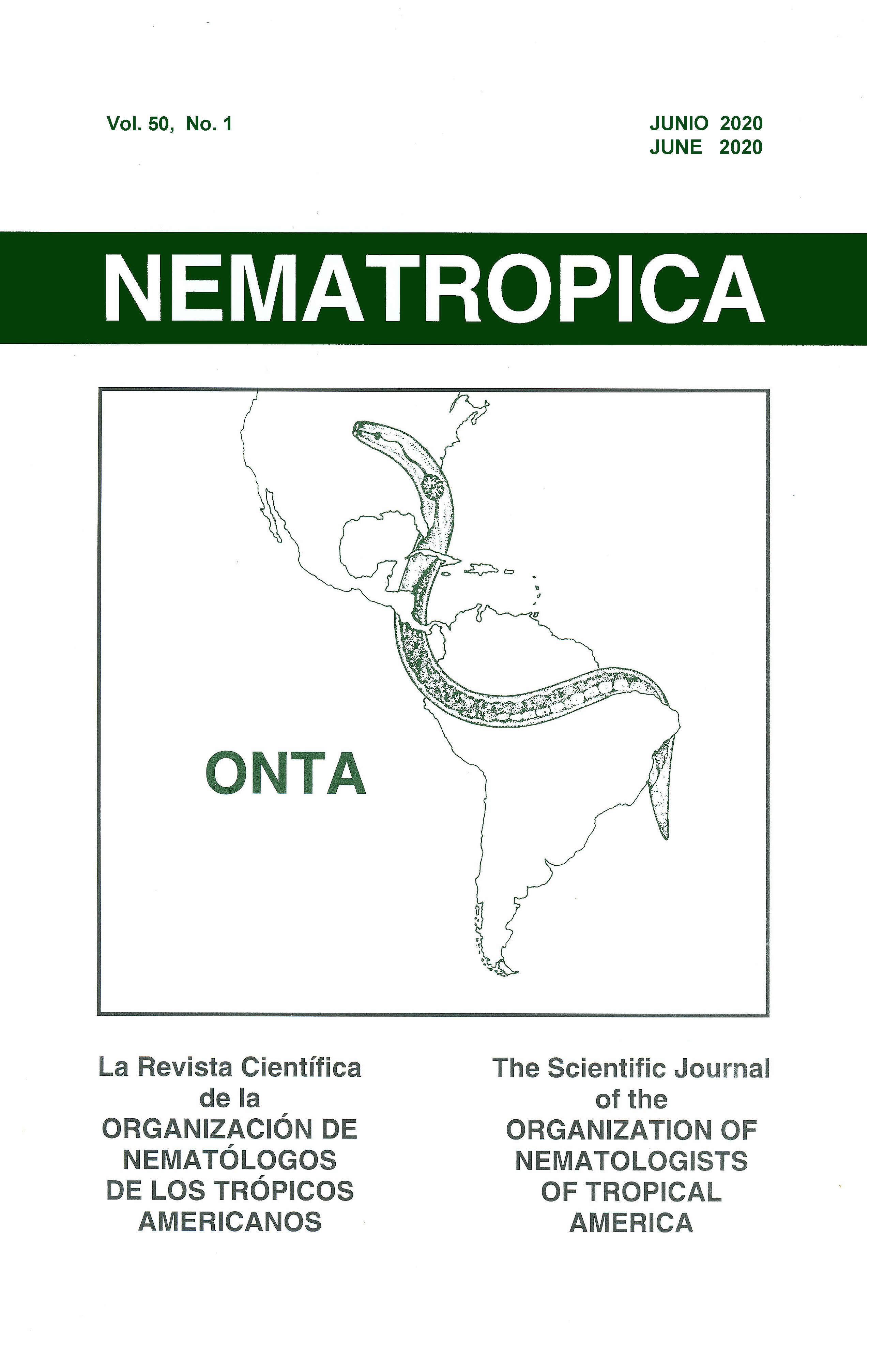TEMPORAL DISTRIBUTION OF PLANT-PARASITIC NEMATODES ON SELECT BERMUDAGRASS SITES IN ALABAMA
Resumo
Plant-parasitic nematodes are a major pest of hybrid bermudagrass (Cynodon dactylon x C. transvaalensis) in the southern United States. In this study, six bermudagrass locations in Alabama were selected for monthly or bimonthly sampling of plant-parasitic nematodes throughout 2018 and 2019. Five plant-parasitic genera were recovered in 2018: Criconemoides, Belonolaimus, Helicotylenchus, Hoplolaimus, and Meloidogyne. Only Belonolaimus was recovered at action thresholds that may warrant the use of a nematicide. Belonolaimus was recovered at highest levels in April and October. In 2019, seven genera were recovered from these locations: Criconemoides, Belonolaimus, Helicotylenchus, Hemicycliophora, Hoplolaimus, Meloidogyne, and Tylenchorhynchus. Of these genera, Belonolaimus and Meloidogyne were found at a population density that may require a nematicide application. Again, highest population density for Belonolaimus was found in April and October. However, Meloidogyne population density peaked during midsummer (June through September). These results indicate that nematode genera behave differently based upon climate season and demonstrate a need for turfgrass managers to sample for nematodes throughout the year and not rely on one sample date for management decisions.

